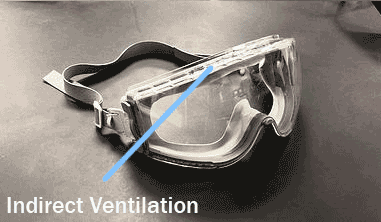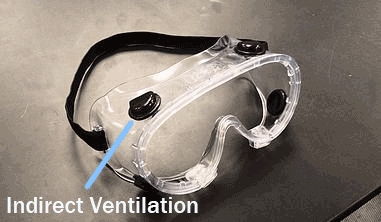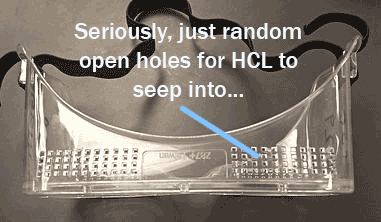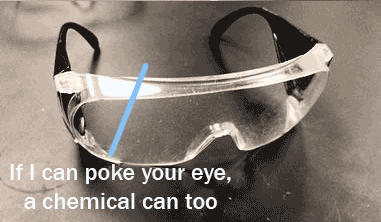Precautions
Precautions
Please do not pour chemicals back into stock bottles. Not only is this rude lab technique, from possible contamination of reagents, but it can be dangerous as well--especially because most of these chemicals are reactive, releasing toxic fumes or producing other nasty results.
Again, please wear gloves! It is a simple precaution that cannot be stressed enough! Gloves are your first line of defense against chemical spills, splashes, and other minor accidents. Since they're required, it's also a wise idea to purchase a lab coat from the Geneseo bookstore or some other vendor. The lab coat should be 100% cotton or rubber, any synthetic fiber coat materials may dissolve in the event of a chemical spill. Keep your goggles on when you're in lab, that way you can keep your oh so important eyes in case other people (or yourself) have an accident.
Wear pants, long sleeve shirts, and low-heeled "full covering" shoes. Open toed and/or fiber topped shoes may not protect your feet from chemical splashes and spills.
Promptly replace all stock chemicals in the proper place, doing so will minimize search time (and accidental bumps and spills).
Know where emergency equipment is and how to use it: the eye washes, showers, and fire extinguishers for quick response in the event of an emergency. Knowing what to do in an emergency helps prevent panic.
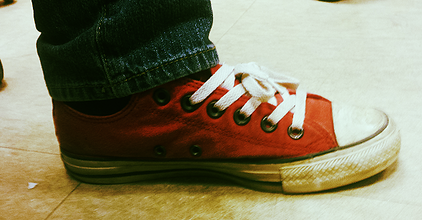 |
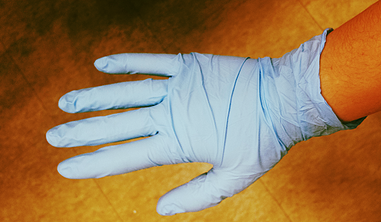 |
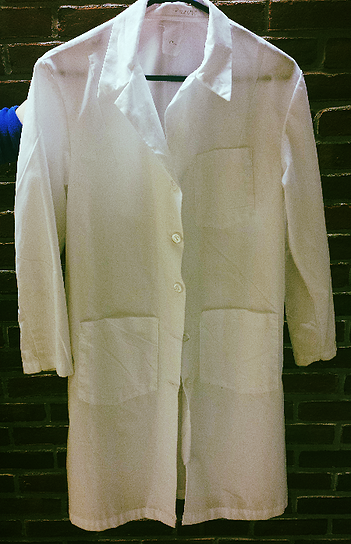 |
Goggles
Goggles are an important part of lab. That said, it is sometimes easy to accidently buy the wrong type of goggles necessary for lab. There is a solid emphasis on the phrase "indirectly-vented." The pictures located below offer clarification on just which type of goggles are acceptable, and why.
Good:
|
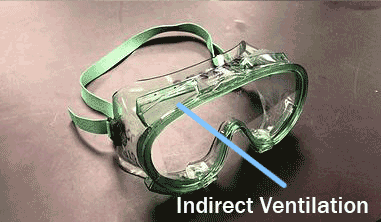 |
||
Bad:
|
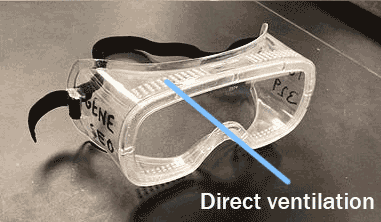 |
||
Recap:
| Good: | Bad: |
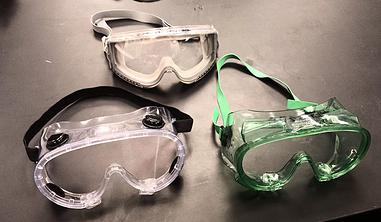 |
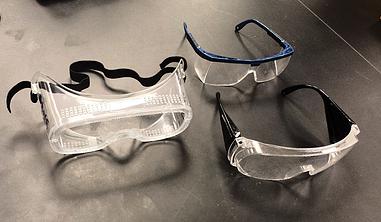 |
